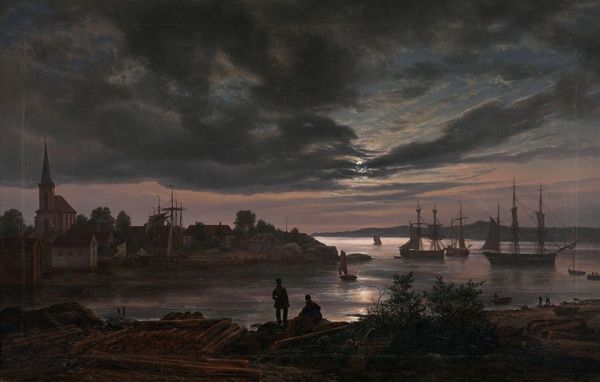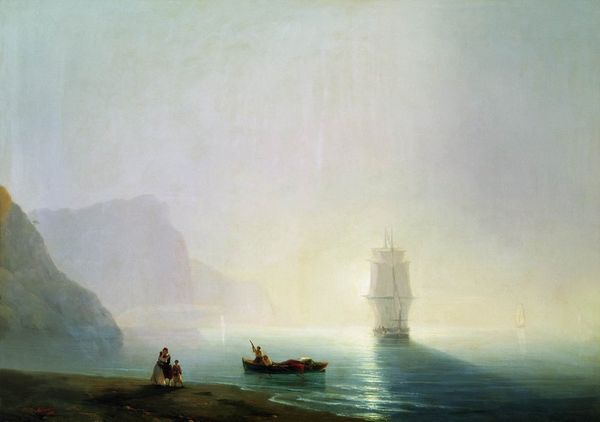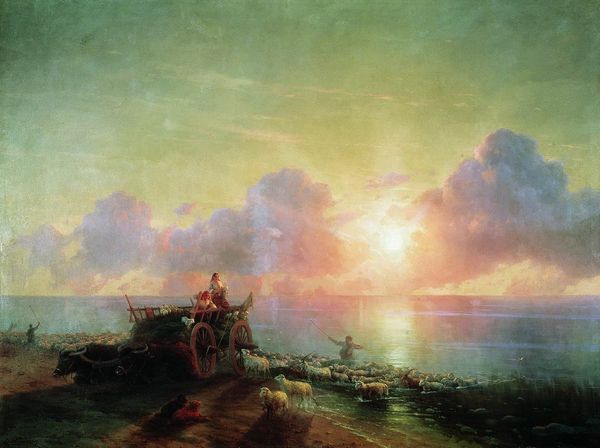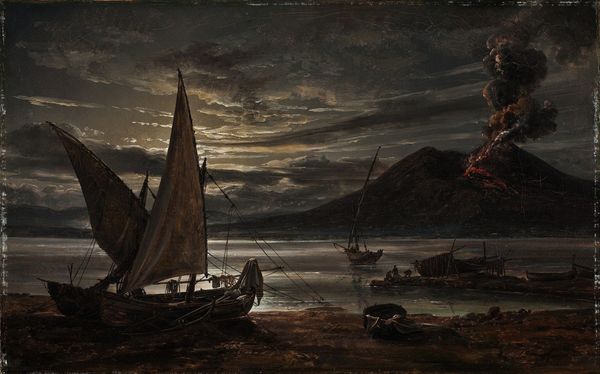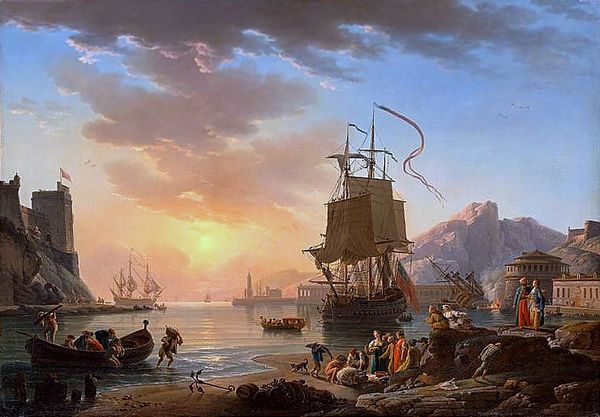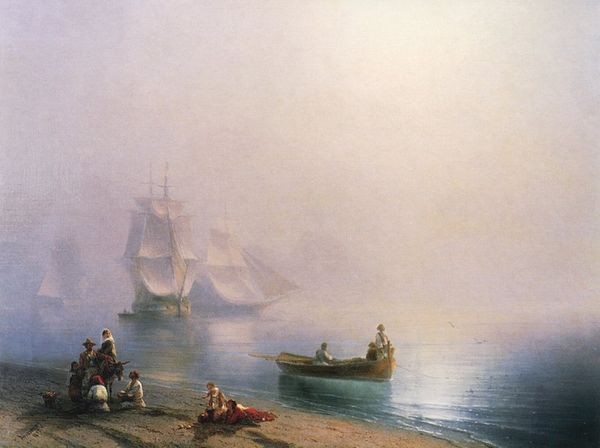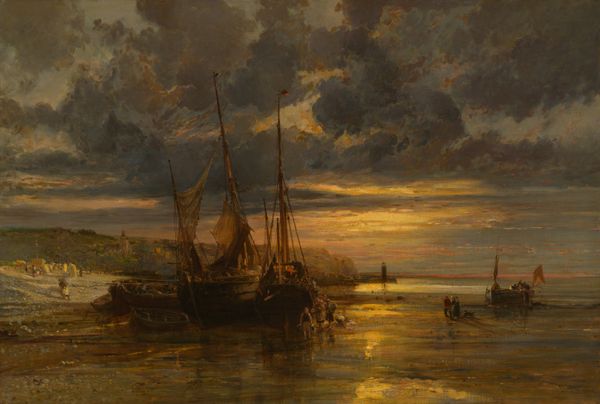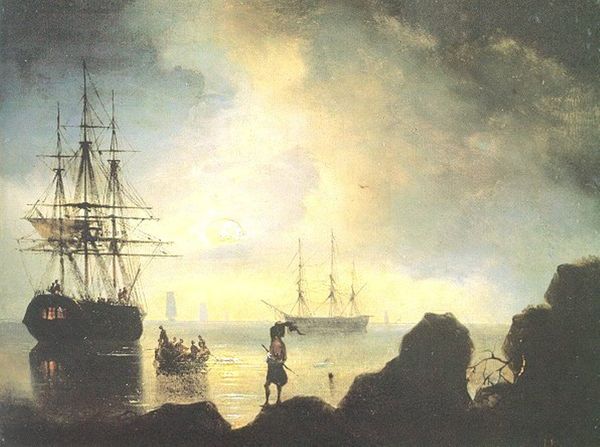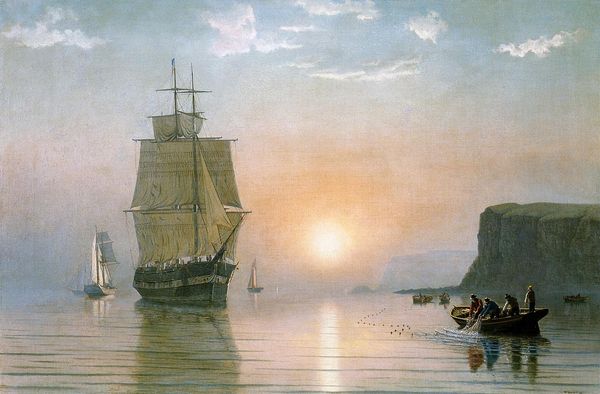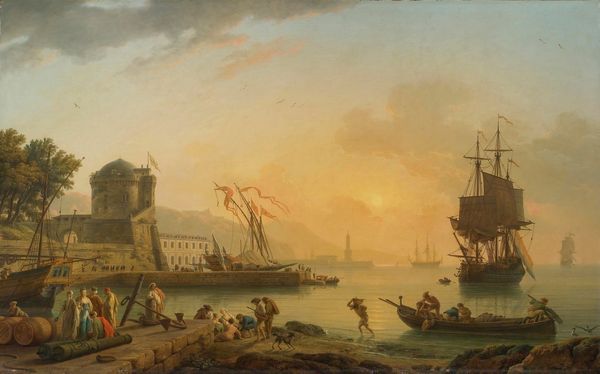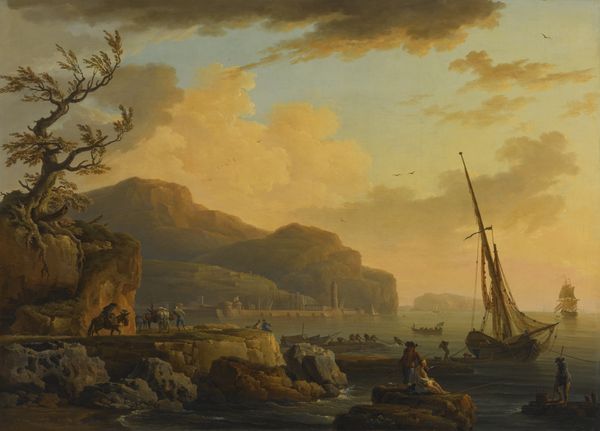
painting, plein-air, oil-paint
#
painting
#
plein-air
#
oil-paint
#
landscape
#
figuration
#
oil painting
#
romanticism
#
genre-painting
#
realism
Copyright: Public Domain: Artvee
Curator: I find this painting quite affecting. There's an undeniable tranquility despite the storm clouds gathering. Editor: Indeed. Looking at "View from Vaekero near Christiania," painted by Johan Christian Dahl in 1827, what immediately strikes me is the representation of liminal spaces, physically and psychologically. The border of land and water is clear but there are emotional uncertainties and the suggestion of potential for change. Curator: Absolutely. And note the figures—a couple, perhaps—rendered with an economy of detail that heightens their symbolic presence. We don’t know them, and this contributes to the feeling of a symbolic Everyman and Everywoman on the precipice of transition. The nets spread out and suspended in the water look ominous but may suggest potential nourishment. Editor: They're positioned at the lower-left corner, subtly decentered as if dwarfed by a looming future or perhaps feeling like bystanders to changes already afoot, politically or socially, at this important harbor and coastal site near what is today the modern capitol city of Norway. There’s an awareness of industrialization lurking just out of frame perhaps; ships representing increased trade, fishing, and travel but at a great price. Curator: An intriguing point, and it aligns with Dahl's Romantic sensibility. The natural world is depicted as grand, but also as something vulnerable. Observe how the light breaks through the clouds, creating a beacon effect upon the water. This highlights not just nature's beauty but the promise of navigation and commerce, even during periods of gloom. Editor: I agree, although this visual technique might also be a reference to divine hope. Either way, there are implications here regarding control, freedom, and captivity depending on how the fishing trade might exploit human labor as well as marine ecosystems. Dahl gives us a visually arresting glimpse of Norway, a land itself then at the crossroads of its own complicated historical and social formation in the 19th century. Curator: This close reading helps to appreciate Dahl’s artistic choices here. While seemingly a straightforward landscape, it functions as an emotional compass pointing toward a future unknown and one that is shadowed by both potential danger and success. Editor: Considering its broader artistic and historical moment certainly encourages further investigation into what we take for granted even today, particularly in societies with such similar geographical contexts.
Comments
No comments
Be the first to comment and join the conversation on the ultimate creative platform.
